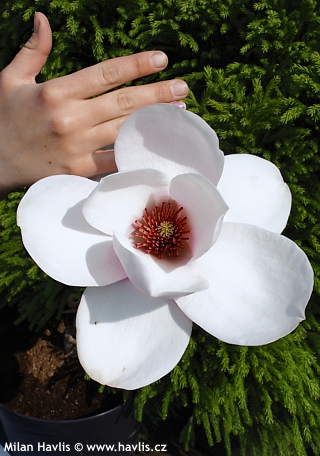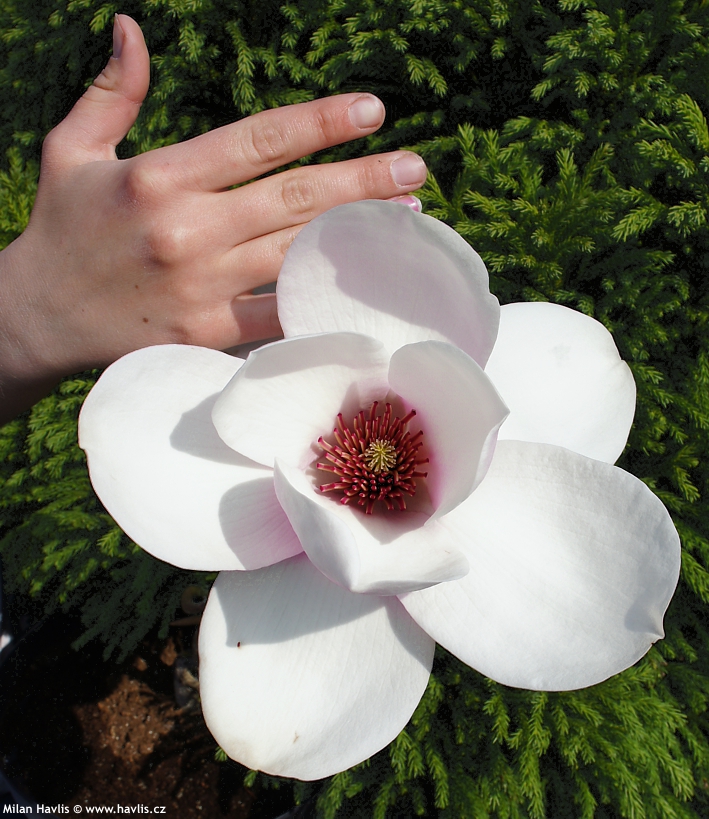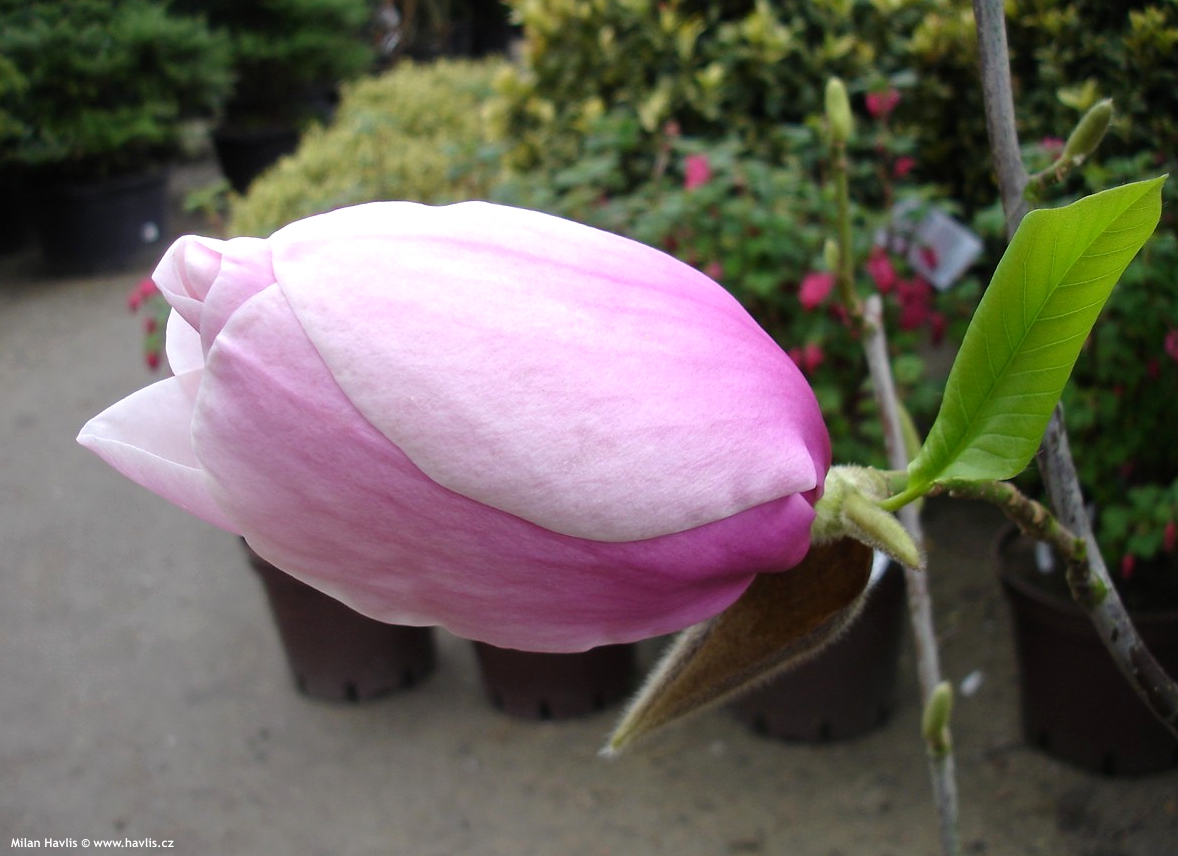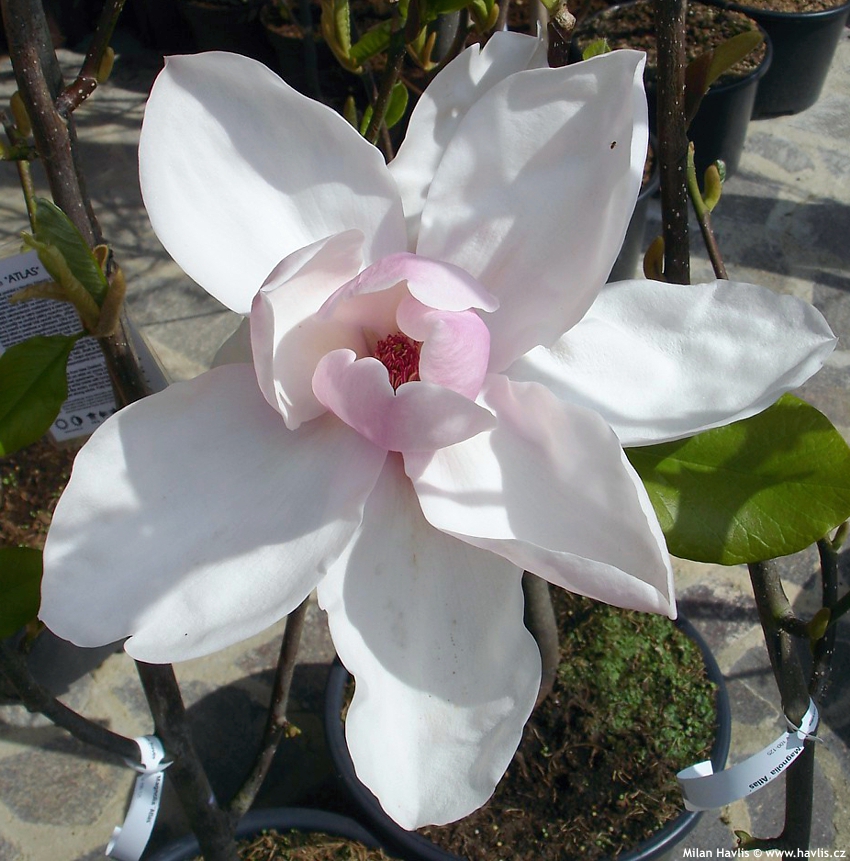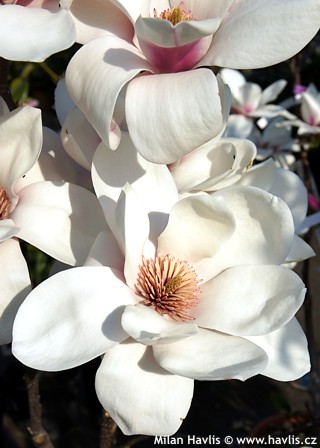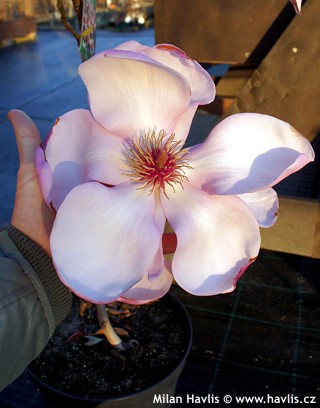Magnolia 'ATLAS' magnolia
Hybridizing and crossing brings new and better varieties of magnolias that have features never seen before. Mark Jury from New Zealand continues this work that was started in 1960´s by his late father Felix. ´Atlas´ is one of his fantastic results, a cross between Magnolia 'Mark Jury' and Magnolia x soulangeana 'Lennei Alba'.
The flowers are incredibly large, they are about 30 cm wide on young plants and 35 to even 38 cm on well established specimens. The colour is lilac pink on the outside and nearly white inside with burgundy red centre with stamens. The impressive flower size earned the tree a special nickname among magnolia fans: pink cabbages on a stick. Though not very nice, true to what it says because when the bud opens it is very rounded and almost clear pink, sitting on a relatively narrow branch compared to its size.
Same as with other Jury magnolias, this was bred to also achieve a good flowering age, which is about 3 years in this case. ´Atlas´ blooms approximately 2 weeks after magnolia soulangeana which helps it avoid the worst spring frosts.
Leave size does not fall behind the flowers – they are 25-35 cm long, mid green. Thanks to hybridizing this variety is a little smaller than its parent but it will still make a well rounded shrub about 4m wide when mature.
Magnolias are not supposed to be pruned. You can prune old shrubs if ill, or trim them to shape or to reduce size, or make an elementary cut to young plants of unsightly or unhealthy appearance. Do this as soon as possible after flowering to secure setting of flower buds for the following year. Be aware that each magnolia can respond differently to pruning.
Deciduous magnolias are quite easy plants. All they need is light, well-drained, acidic soil with equal moisture throughout the year. Once established they can do with occasional drought but will not look as nice as the ones with regular watering. Just pay attention to how to plant your magnolia. First, find it a spot where it will live forever and ever. It does not like transplanting. And as it makes shallow roots reaching well over its spread stay away from disturbing the roots by digging or messing about around it. Just cover the soil with bark mulch and do not plant anything else near it after say the second year after planting onwards. You could damage the very important top roots that absorb maximum moisture and nutrients from the soil. Also avoid planting magnolia too deep. Thus you could be digging its grave. It is fully hardy to USDA zone 6 (possibly sheltered parts of 5), just make sure it is not in a too exposed windy area.
Last update 15-12-2007

































